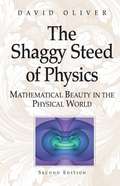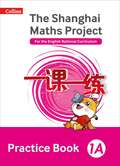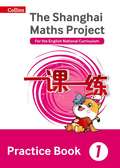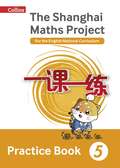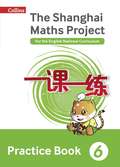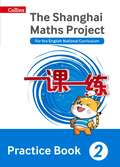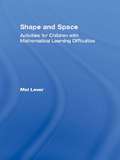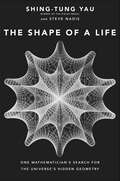- Table View
- List View
Shadows of Syntax: Revitalizing Logical and Mathematical Conventionalism
by Jared WarrenWhat is the source of logical and mathematical truth? This volume revitalizes conventionalism as an answer to this question. Conventionalism takes logical and mathematical truth to have their source in linguistic conventions. This was an extremely popular view in the early 20th century, but it was never worked out in detail and is now almost universally rejected in mainstream philosophical circles. In Shadows of Syntax, Jared Warren offers the first book-length treatment and defense of a combined conventionalist theory of logic and mathematics. He argues that our conventions, in the form of syntactic rules of language use, are perfectly suited to explain the truth, necessity, and a priority of logical and mathematical claims. In Part I, Warren explains exactly what conventionalism amounts to and what linguistic conventions are. Part II develops an unrestricted inferentialist theory of the meanings of logical constants that leads to logical conventionalism. This conventionalist theory is elaborated in discussions of logical pluralism, the epistemology of logic, and of the influential objections that led to the historical demise of conventionalism. Part III aims to extend conventionalism from logic to mathematics. Unlike logic, mathematics involves both ontological commitments and a rich notion of truth that cannot be generated by any algorithmic process. To address these issues Warren develops conventionalist-friendly but independently plausible theories of both metaontology and mathematical truth. Finally, Part IV steps back to address big picture worries and meta-worries about conventionalism. This book develops and defends a unified theory of logic and mathematics according to which logical and mathematical truths are reflections of our linguistic rules, mere shadows of syntax.
Shadows of Syntax: Revitalizing Logical and Mathematical Conventionalism
by Jared WarrenWhat is the source of logical and mathematical truth? This volume revitalizes conventionalism as an answer to this question. Conventionalism takes logical and mathematical truth to have their source in linguistic conventions. This was an extremely popular view in the early 20th century, but it was never worked out in detail and is now almost universally rejected in mainstream philosophical circles. In Shadows of Syntax, Jared Warren offers the first book-length treatment and defense of a combined conventionalist theory of logic and mathematics. He argues that our conventions, in the form of syntactic rules of language use, are perfectly suited to explain the truth, necessity, and a priority of logical and mathematical claims. In Part I, Warren explains exactly what conventionalism amounts to and what linguistic conventions are. Part II develops an unrestricted inferentialist theory of the meanings of logical constants that leads to logical conventionalism. This conventionalist theory is elaborated in discussions of logical pluralism, the epistemology of logic, and of the influential objections that led to the historical demise of conventionalism. Part III aims to extend conventionalism from logic to mathematics. Unlike logic, mathematics involves both ontological commitments and a rich notion of truth that cannot be generated by any algorithmic process. To address these issues Warren develops conventionalist-friendly but independently plausible theories of both metaontology and mathematical truth. Finally, Part IV steps back to address big picture worries and meta-worries about conventionalism. This book develops and defends a unified theory of logic and mathematics according to which logical and mathematical truths are reflections of our linguistic rules, mere shadows of syntax.
Shafarevich Maps and Automorphic Forms
by János KollárThe aim of this book is to study various geometric properties and algebraic invariants of smooth projective varieties with infinite fundamental groups. This approach allows for much interplay between methods of algebraic geometry, complex analysis, the theory of harmonic maps, and topology. Making systematic use of Shafarevich maps, a concept previously introduced by the author, this work isolates those varieties where the fundamental group influences global properties of the canonical class.The book is primarily geared toward researchers and graduate students in algebraic geometry who are interested in the structure and classification theory of algebraic varieties. There are, however, presentations of many other applications involving other topics as well--such as Abelian varieties, theta functions, and automorphic forms on bounded domains. The methods are drawn from diverse sources, including Atiyah's L2 -index theorem, Gromov's theory of Poincaré series, and recent generalizations of Kodaira's vanishing theorem.Originally published in 1995.The Princeton Legacy Library uses the latest print-on-demand technology to again make available previously out-of-print books from the distinguished backlist of Princeton University Press. These editions preserve the original texts of these important books while presenting them in durable paperback and hardcover editions. The goal of the Princeton Legacy Library is to vastly increase access to the rich scholarly heritage found in the thousands of books published by Princeton University Press since its founding in 1905.
The Shaggy Steed of Physics: Mathematical Beauty in the Physical World
by David OliverThe Shaggy Steed is an unassuming figure from Irish folklore who reveals himself as an inspiring teacher of the forces hidden in the universe. This book celebrates an unassuming bit of physics that also turns out to be an inspiring teacher. The two-body problem - the motion of two bodies bound by the inverse-square force of gravity and electricity - is the Shaggy Steed of physics, guiding the reader to an understanding of both the forces and the mathematical beauty hidden in the physical world.
Shallow and Deep Learning Principles: Scientific, Philosophical, and Logical Perspectives
by Zekâi ŞenThis book discusses Artificial Neural Networks (ANN) and their ability to predict outcomes using deep and shallow learning principles. The author first describes ANN implementation, consisting of at least three layers that must be established together with cells, one of which is input, the other is output, and the third is a hidden (intermediate) layer. For this, the author states, it is necessary to develop an architecture that will not model mathematical rules but only the action and response variables that control the event and the reactions that may occur within it. The book explains the reasons and necessity of each ANN model, considering the similarity to the previous methods and the philosophical - logical rules.
Shallow Water Hydraulics
by Oscar Castro-Orgaz Willi H. HagerThis book presents the theory and computation of open channel flows, using detailed analytical, numerical and experimental results. The fundamental equations of open channel flows are derived by means of a rigorous vertical integration of the RANS equations for turbulent flow. In turn, the hydrostatic pressure hypothesis, which forms the core of many shallow water hydraulic models, is scrutinized by analyzing its underlying assumptions. The book’s main focus is on one-dimensional models, including detailed treatments of unsteady and steady flows. The use of modern shock capturing finite difference and finite volume methods is described in detail, and the quality of solutions is carefully assessed on the basis of analytical and experimental results.The book’s unique features include:• Rigorous derivation of the hydrostatic-based shallow water hydraulic models• Detailed treatment of steady open channel flows, including the computation of transcritical flow profiles• General analysis of gate maneuvers as the solution of a Riemann problem• Presents modern shock capturing finite volume methods for the computation of unsteady free surface flows• Introduces readers to movable bed and sediment transport in shallow water models• Includes numerical solutions of shallow water hydraulic models for non-hydrostatic steady and unsteady free surface flowsThis book is suitable for both undergraduate and graduate level students, given that the theory and numerical methods are progressively introduced starting with the basics. As supporting material, a collection of source codes written in Visual Basic and inserted as macros in Microsoft Excel® is available. The theory is implemented step-by-step in the codes, and the resulting programs are used throughout the book to produce the respective solutions.
Shame: Interpersonal Behavior, Psychopathology, and Culture (Series in Affective Science)
by Paul Gilbert Bernice AndrewsOne of the most commonly reported emotions in people seeking psychotherapy is shame, and this emotion has become the subject of intense research and theory over the last 20 years. In Shame: Interpersonal Behavior, Psychopathology, and Culture, Paul Gilbert and Bernice Andrews, together with some of the most eminent figures in the field, examine the effect of shame on social behavior, social values, and mental states. The text utilizes a multidisciplinary approach, including perspectives from evolutionary and clinical psychology, neurobiology, sociology, and anthropology. In Part I, the authors cover some of the core issues and current controversies concerning shame. Part II explores the role of shame on the development of the infant brain, its evolution, and the relationship between shame as a personal and interpersonal construct and stigma. Part III examines the connection between shame and psychopathology. Here, authors are concerned with outlining how shame can significantly influence the formation, manifestation, and treatment of psychopathology. Finally, Part IV discusses the notion that shame is not only related to internal experiences but also conveys socially shared information about one's status and standing in the community. Shame will be essential reading for clinicians, clinical researchers, and social psychologists. With a focus on shame in the context of social behavior, the book will also appeal to a wide range of researchers in the fields of sociology, anthropology, and evolutionary psychology.
The Shanghai Maths Project — PRACTICE BOOK 1A: (PDF) (The Shanghai Maths Project Series)
by Professor Lianghuo FanThe Shanghai Maths Project is based on the maths programme delivered in Shanghai. This authentic resource will provide complete coverage of the curriculum for years 1-11 plus varied practice of key concepts and summative assessments for each year. This second edition of The Shanghai Maths Project is an authentic Shanghai resource adapted for the English curriculum. • 2 workbooks per year • Units of practice linked to the teaching in the Teacher’s Guides • End of unit tests, end of year test • Learner books support pupils with key maths facts and vocabulary • Full coverage of UK curriculum objectives
The Shanghai Maths Project — YEAR 4 LEARNING: (PDF) (The Shanghai Maths Project Series)
by Laura Clarke Caroline Clissold Sarah Eaton Linda Glithro Paul Hodge Jane Jones Steph King Richard Perring Paul Wrangles Amanda SimpsonThe Shanghai Maths Project Year 4 Learning is a pupil textbook containing the Year 4 maths facts and full pictorial glossary to enable children to master the Year 4 maths programme of study for England. It sits alongside the Practice Books and the Teacher’s Guide to complete the Shanghai Maths programme for Year 4. The Shanghai Maths Project Year 4 Learning is a pupil textbook containing: • Maths facts for each topic with colourful models and images • Full Year 4 pictorial glossary of mathematical terms It sits alongside the Practice Books and the Teacher’s Guide to complete the Shanghai Maths programme for Year 4.
The Shanghai Maths Project Practice Book Year 1: For the English National Curriculum (PDF)
by Paul Broadbent Lianghuo Professor FanThe Shanghai Maths Project Practice Book 1 is a Year 1 workbook providing varied practice of key concepts and summative assessments of the UK curriculum. The approach is based on the successful maths programme delivered in Shanghai.
Shanghai Maths Project Practice Book Year 5: For the English National Curriculum (PDF)
by Edited translated by Professor Lianghuo FanThe Shanghai Maths Project Practice Book 5 is a Year 5 workbook providing varied practice of key concepts and summative assessments of the UK curriculum. The approach is based on the successful maths programme delivered in Shanghai. The Shanghai Maths Project is an authentic Shanghai resource adapted for the English curriculum. * 1 workbook per year * 8-10 chapters, made up of exercises (one lesson, one exercise) * End of unit tests, end of year test * Learning objective at top of each exercise, so teachers can see gradual progression * Full coverage of UK curriculum objectives
The Shanghai Maths Project Practice Book Year 6: For the English National Curriculum (PDF)
by Edited translated by Professor Lianghuo FanThe Shanghai Maths Project Practice Book 6 is a Year 6 workbook providing varied practice of key concepts and summative assessments of the UK curriculum. The approach is based on the successful maths programme delivered in Shanghai. The Shanghai Maths Project is an authentic Shanghai resource adapted for the English curriculum. * 1 workbook per year * 8-10 chapters, made up of exercises (one lesson, one exercise) * End of unit tests, end of year test * Learning objective at top of each exercise, so teachers can see gradual progression * Full coverage of UK curriculum objectives
Shanghai Maths - The Shanghai Maths Project Practice Book Year 2: For the English National Curriculum (PDF)
by Lianghuo Fan Paul BroadbentThe Shanghai Maths Project Practice Book 2 is a Year 2 workbook providing varied practice of key concepts and summative assessments of the UK curriculum. The approach is based on the successful maths programme delivered in Shanghai.The Shanghai Maths Project is an authentic Shanghai resource adapted for the English curriculum. 1 workbook per year 8-10 chapters, made up of exercises (one lesson, one exercise) End of unit tests, end of year test Learning objective at top of each exercise, so teachers can see gradual progression Full coverage of UK curriculum objectives
Shanghai Maths - Shanghai Maths Workbook Year 4 (PDF)
by Lianghuo FanThe Shanghai Maths Project Practice Book 4 is a Year 4 workbook providing varied practice of key concepts and summative assessments of the UK curriculum. The approach is based on the successful maths programme delivered in Shanghai. The Shanghai Maths Project is an authentic Shanghai resource adapted for the English curriculum. * 1 workbook per year * 8-10 chapters, made up of exercises (one lesson, one exercise) * End of unit tests, end of year test * Learning objective at top of each exercise, so teachers can see gradual progression * Full coverage of UK curriculum objectives
Shape: The Hidden Geometry of Absolutely Everything
by Jordan EllenbergFrom the Sunday Times bestselling author of How Not to Be Wrong, a hugely entertaining exploration of the geometry that underlies our world How should a democracy choose its representatives? How can you stop a pandemic from sweeping the world? How do computers learn to play chess? Can ancient Greek proportions predict the stock market? (Sorry, no.) What should your kids learn in school if they really want to learn to think? The answers to all these questions can be found in geometry.If you're like most people, geometry is a dimly-remembered exercise, handed down from the ancients, that you gladly left behind in school. It seemed to be a tortuous way of proving some fact about triangles that was obvious to you in the first place. That's not geometry. OK, it is geometry, but only a tiny part, that has as much to do with the modern, fast-moving discipline as conjugating a verb has to do with a great novel.In Shape, Sunday Times-bestselling author Jordan Ellenberg reveals the geometry underneath some of the most important scientific, political, and philosophical problems we face, from the spread of coronavirus to rise of machine learning. The word 'geometry,' from the Greek, means 'measuring the world.' But geometry doesn't just measure the world - it explains it. Shape shows us how.
Shape Analysis and Structuring (Mathematics and Visualization)
by Leila De Floriani Michela SpagnuoloWith a lot of recent developments in the field, this much-needed book has come at just the right time. It covers a variety of topics related to preserving and enhancing shape information at a geometric level. The contributors also cover subjects that are relevant to effectively capturing the structure of a shape by identifying relevant shape components and their mutual relationships.
Shape and Shape Theory (Wiley Series in Probability and Statistics #500)
by D. G. Kendall D. Barden T. K. Carne H. LeShape and Shape Theory D. G. Kendall Churchill College, University of Cambridge, UK D. Barden Girton College, University of Cambridge, UK T. K. Carne King's College, University of Cambridge, UK H. Le University of Nottingham, UK The statistical theory of shape is a relatively new topic and is generating a great deal of interest and comment by statisticians, engineers and computer scientists. Mathematically, 'shape' is the geometrical information required to describe an object when location, scale and rotational effects are removed. The theory was pioneered by Professor David Kendall to solve practical problems concerning shape. This text presents an elegant account of the theory of shape that has evolved from Kendall's work. Features include: * A comprehensive account of Kendall's shape spaces * A variety of topological and geometric invariants of these spaces * Emphasis on the mathematical aspects of shape analysis * Coverage of the mathematical issues for a wide range of applications The early chapters provide all the necessary background information, including the history and applications of shape theory. The authors then go on to analyse the topic, in brilliant detail, in a variety of different shape spaces. Kendall's own procedures for visualising distributions of shapes and shape processes are covered at length. Implications from other branches of mathematics are explored, along with more advanced applications, incorporating statistics and stochastic analysis. Applied statisticians, applied mathematicians, engineers and computer scientists working and researching in the fields of archaeology, astronomy, biology, geography and physical chemistry will find this book of great benefit. The theories presented are used today in a wide range of subjects from archaeology through to physics, and will provide fascinating reading to anyone engaged in such research. Visit our web page! http://www.wiley.com/
The Shape and Size of the Earth: A Historical Journey from Homer to Artificial Satellites
by Dino BoccalettiThis book describes in detail the various theories on the shape of the Earth from classical antiquity to the present day and examines how measurements of its form and dimensions have evolved throughout this period. The origins of the notion of the sphericity of the Earth are explained, dating back to Eratosthenes and beyond, and detailed attention is paid to the struggle to establish key discoveries as part of the cultural heritage of humanity. In this context, the roles played by the Catholic Church and the philosophers of the Middle Ages are scrutinized. Later contributions by such luminaries as Richer, Newton, Clairaut, Maupertuis, and Delambre are thoroughly reviewed, with exploration of the importance of mathematics in their geodetic enterprises. The culmination of progress in scientific research is the recognition that the reference figure is not a sphere but rather a geoid and that the earth’s shape is oblate. Today, satellite geodesy permits the solution of geodetic problems by means of precise measurements. Narrating this fascinating story from the very beginning not only casts light on our emerging understanding of the figure of the Earth but also offers profound insights into the broader evolution of human thought.
Shape and Space: Activities for Children with Mathematical Learning Difficulties
by Mel LeverFirst Published in 2003. Routledge is an imprint of Taylor & Francis, an informa company.
Shape and Space: Activities for Children with Mathematical Learning Difficulties
by Mel LeverFirst Published in 2003. Routledge is an imprint of Taylor & Francis, an informa company.
Shape Counting (tactile)
by Adrian FarnsworthThis page shows a small key and a rectangle of different shapes for counting.
Shape in Medical Imaging: International Workshop, ShapeMI 2020, Held in Conjunction with MICCAI 2020, Lima, Peru, October 4, 2020, Proceedings (Lecture Notes in Computer Science #12474)
by Martin Reuter Christian Wachinger Hervé Lombaert Beatriz Paniagua Orcun Goksel Islem RekikThis book constitutes the proceedings of the International Workshop on Shape in Medical Imaging, ShapeMI 2020, which was held in conjunction with the 23rd International Conference on Medical Image Computing and Computer Assistend Intervention, MICCAI 2020, in October 2020. The conference was planned to take place in Lima, Peru, but changed to a virtual format due to the COVID-19 pandemic. The 12 full papers included in this volume were carefully reviewed and selected from 18 submissions. They were organized in topical sections named: methods; learning; and applications.
Shape Interrogation for Computer Aided Design and Manufacturing
by Nicholas M. Patrikalakis Takashi MaekawaShape interrogation is the process of extraction of information from a geometric model. It is a fundamental component of Computer Aided Design and Manufacturing (CAD/CAM) systems. This book provides a bridge between the areas geometric modeling and solid modeling. Apart from the differential geometry topics covered, the entire book is based on the unifying concept of recasting all shape interrogation problems to the solution of a nonlinear system. It provides the mathematical fundamentals as well as algorithms for various shape interrogation methods including nonlinear polynomial solvers, intersection problems, differential geometry of intersection curves, distance functions, curve and surface interrogation, umbilics and lines of curvature, and geodesics.
The Shape of a Life: One Mathematician's Search for the Universe's Hidden Geometry
by Shing-Tung Yau Steve NadisA Fields medalist recounts his lifelong transnational effort to uncover the geometric shape—the Calabi-Yau manifold—that may store the hidden dimensions of our universe. Harvard geometer and Fields medalist Shing-Tung Yau has provided a mathematical foundation for string theory, offered new insights into black holes, and mathematically demonstrated the stability of our universe. In this autobiography, Yau reflects on his improbable journey to becoming one of the world’s most distinguished mathematicians. Beginning with an impoverished childhood in China and Hong Kong, Yau takes readers through his doctoral studies at Berkeley during the height of the Vietnam War protests, his Fields Medal–winning proof of the Calabi conjecture, his return to China, and his pioneering work in geometric analysis. This new branch of geometry, which Yau built up with his friends and colleagues, has paved the way for solutions to several important and previously intransigent problems. With complicated ideas explained for a broad audience, this book offers readers not only insights into the life of an eminent mathematician, but also an accessible way to understand advanced and highly abstract concepts in mathematics and theoretical physics.
The Shape of Social Inequality: Stratification and Ethnicity in Comparative Perspective (Research in Social Stratification and Mobility #Volume 22)
by David BillsThis volume brings together former students, colleagues, and others influenced by the sociological scholarship of Archibald O. Haller to celebrate Haller's many contributions to theory and research on social stratification and mobility. All of the chapters respond to Haller's programmatic agenda for stratification research: "A full program aimed at understanding stratification requires: first, that we know what stratification structures consist of and how they may vary; second, that we identify the individual and collective consequences of the different states and rates of change of such structures; and third, seeing that some degree of stratification seems to be present everywhere, that we identify the factors that make stratification structures change." The contributors to this Festschrift address such topics as the changing nature of stratification regimes, the enduring significance of class analysis, the stratifying dimensions of race, ethnicity, and gender, and the interplay between educational systems and labor market outcomes. Many of the chapters adopt an explicitly cross-societal comparative perspective on processes and consequences of social stratification. The volume offers both conceptually and empirically important new analyses of the shape of social stratification.


